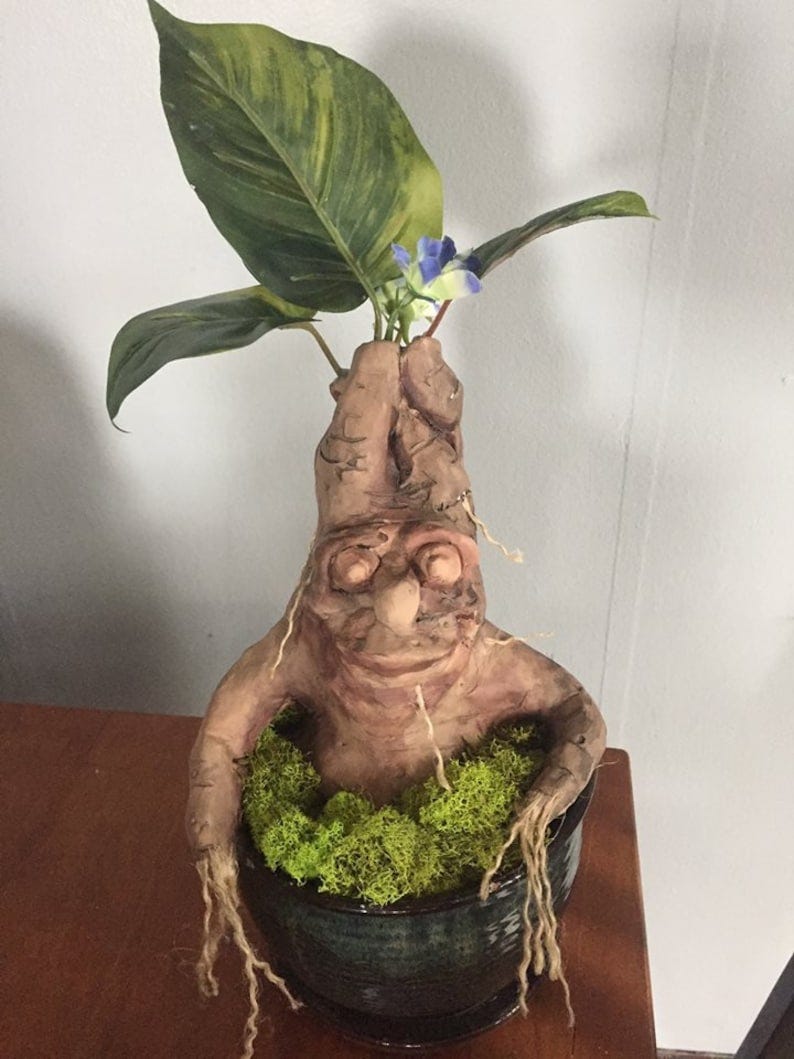Identifying the Mandrake
Reuben went and found mandrakes in the field and brought them to his mother Leah. — The Septuagint translated דוּדָאִים as μανδραγορῶν (mandragoron), which became Latinized as mandragoras, hence "mandrake.” As a plant, mandrakes are related to the potato family that spreads large spinach-shaped leaves in a rosette pattern. Its root resembles a human figure, and the ancient regarded it as an aphrodisiac and enhancer of fertility if used in small quantities. The Mandrake (Slandraffora officinalis) is of the family Solanaceae (to which the Potato belongs), and has a very peculiar appearance that grows in the early spring.
The ancients viewed mandrakes as “love-apples.” The Hebrew words for ‘beloved’ or ‘loved one’ דּוֹד (cf. Song 1:16) and for mandrake דּוּדַי (dûday) both share the same root. (Kimchi). Some scholars contend that mandrakes are uncommon in Mesopotamia, but they may have been present then. In any event, Rachel and Leah believed that the plant could medicinally assist their fertility. Ramban suggests that mandrakes might have been used to perfume her bed (see Prov. 7:17). It seems more likely Rachel and Leah believed in the magical properties of this plant and hoped it would help her get pregnant.
Mandrakes grow low, like lettuce, which its leaves resemble, except that they are dark green. Its dark-green, oblong, wrinkled leaves form a rosette. Its small plum-sized yellow-red fruits resembling tomatoes or small oranges have an unusual smell and taste (Song of Sol. 7:13) and may have been used medicinally as a narcotic or stimulant. Even in modern times, many third-world peoples still view the mandrake as having the ability to make an infertile woman fertile. [1]
Superstitions Regarding Mandrakes
The 18th-century biblical naturalist Tristram noted that the Mandrake has been the subject of many strange superstitions. Most of the Mediterranean world considered mandrakes as man-like plants, where some primitive societies believed that one could hear it scream when somebody pulled them from the earth. They observed that it resembled the shape of a man and that it shrieked and groaned when dug up; that the usual mode of procuring it was by tying a dog to the plant, whose struggles tore it up, but that the plant’s shrieks killed the dog! Sir James Frazier records a similar legend, “Man grows under the gallows tree from the bodily droppings of a hanged man. It is a plant with broad leaves and yellow fruit. But there is great danger in digging it up, for while it is being uprooted, it moans and shrieks so horribly that the digger dies on the spot.” [2]
[1] Frazier continues: “In modern times the high value set on the mandrake as a potent charm, especially useful for its power of fertilizing barren women, has given rise to a trade in counterfeit mandrakes carved in human form out of bryony and other roots. The use of substitutes for the mandrake was all the more necessary in northern countries, because the plant grows wild only in lands about the Mediterranean, including Syria, Cilicia, Crete, Sicily, Spain, and North Africa” (p. 378.) Some places in Europe, witches were believed to use it in their potions to cure fertility (ibid., 384-485).
[2] James Frazier, Folklore in the OT, Vol. 2, 384-385.



